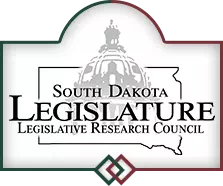|
State of South Dakota
|
|
NINETY-THIRD SESSION LEGISLATIVE ASSEMBLY, 2018 |
| 910Z0202 | HOUSE BILL NO. 1186 |
|
Introduced by: Representatives Peterson (Sue), Dennert, DiSanto, Frye-Mueller, Gosch,
Howard, Kaiser, Livermont, Marty, May, Pischke, and Wiese and Senators
Stalzer, Kolbeck, and Nelson
|
FOR AN ACT ENTITLED, An Act to provide for a legislative review of the Board of Regents.
BE IT ENACTED BY THE LEGISLATURE OF THE STATE OF SOUTH DAKOTA:
Section 1. That chapter 2-9 be amended by adding a NEW SECTION to read:
BE IT ENACTED BY THE LEGISLATURE OF THE STATE OF SOUTH DAKOTA:
Section 1. That chapter 2-9 be amended by adding a NEW SECTION to read:
Commencing in 2018 and at least once every five years thereafter, the Executive Board of
the Legislative Research Council shall review and evaluate each institution and university center
under jurisdiction of the Board of Regents in accordance with section 2 of this Act. The
executive board may instead appoint an interim committee composed of legislative members
to review and evaluate each institution and university center under the jurisdiction of the Board
of Regents in accordance with section 2 of this Act.
Section 2. That chapter 2-9 be amended by adding a NEW SECTION to read:
Section 2. That chapter 2-9 be amended by adding a NEW SECTION to read:
Each institution, university center, and the regental system as a whole shall present a
strategic plan and potential efficiency improvements with a proposed timeline. The following
factors and metrics, of at least the last five fiscal years, shall be used to review and evaluate each
institution and university center under the jurisdiction of the Board of Regents in achieving
student success, affordability, performance, mission achievement, and overlap:
(1) Increasing higher education attainment:
(a) The percent of first-time, full-time freshmen returning for a second year of
enrollment;
(b) Students accumulating thirty, sixty, and ninety credit hours;
(c) Degrees conferred per one hundred student FTEs;
(d) The number of degrees conferred for bachelors, associates, masters, education
specialists, doctoral, and law; and
(e) Four-year and five-year graduation rates;
(2) Affordability of higher education in the region:
(a) State ranking of tuition and fees for undergraduate and graduate students;
(b) State ranking for all scholarship dollars provided to students; and
(c) Yearly percent of tuition and fee growth for residents and nonresidents;
(3) Student placement and performance:
(a) Number of graduates with science, technology, engineering, and mathematics
(STEM) credentials;
(b) Number of graduates with high demand credentials;
(c) Median average full-time wages of undergraduates employed in South Dakota
one year after graduation; and
(d) Percent of bachelor's graduates who remain in South Dakota to become
employed and/or continue their education one year after graduation;
(4) Mission achievement and overlap:
(a) Number of credits taken online and on-campus;
(b) Number of new degrees added and removed;
(c) Number of course and program duplication among institutions;
(d) Institutional support expenses per student FTE; and
(e) State general funds per student FTE; and
(5) Any other factors or metrics determined by the executive board or the designated
committee to carry out the review and evaluation.
The executive board or the designated committee may present draft legislation and policy
recommendations to the Legislature.
